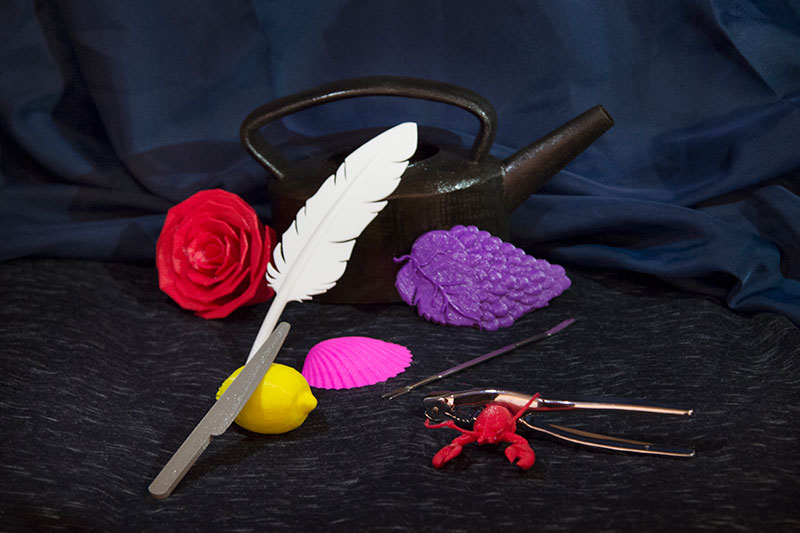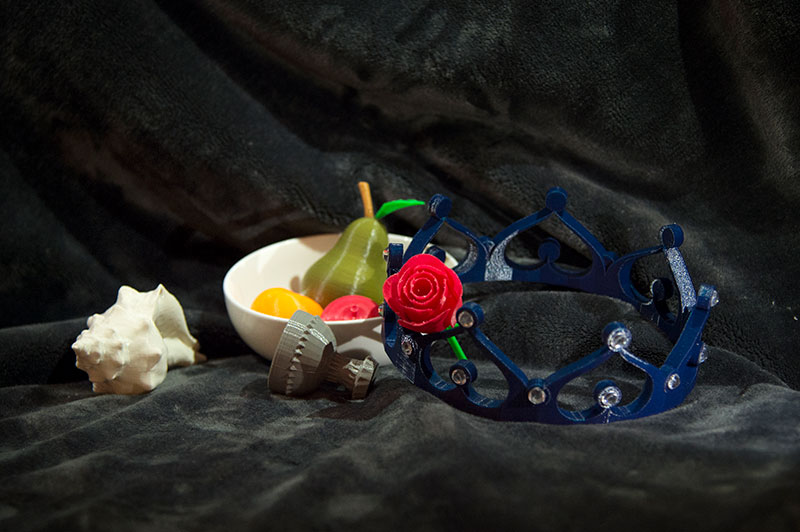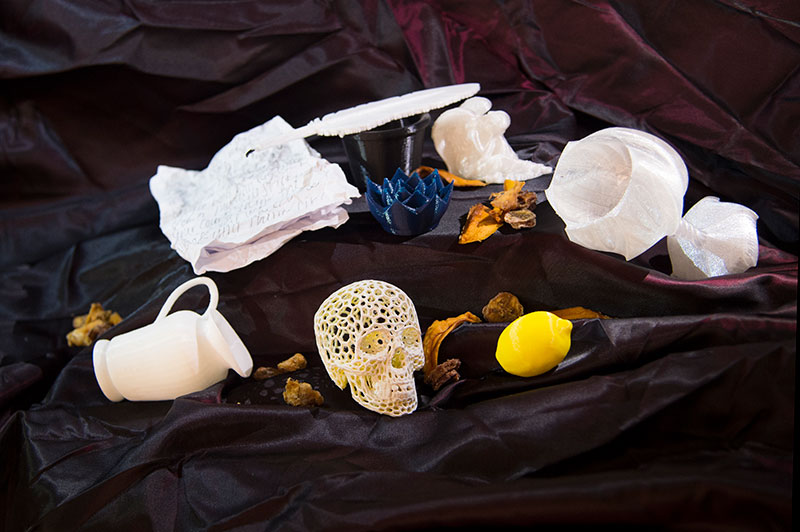Early Modern Still Lifes
A still life is a painting of inanimate objects, almost always an indoor scene. Any plants or animals depicted are no longer living. Common subjects are vases of flowers, animals killed for food consumption, musical or writing instruments, and housewares. Many still life artists used the technique trompe-l’oeil, in which a painting appears realistic and almost three-dimensional through optical illusion.
In History 1101 Foundations of Europe, students learned about the past and then recreated it with digital and artistic skills. Using a 3-D printer, they reproduced items found in early modern still lifes. Then, working in groups, they arranged these to make their own still lifes. Some examples, along with the students’ descriptions of what their still lifes represent, are below.

"Fleeting Life"
The fruit and candlestick show how quickly life goes along with the watch. The tipped-over goblet shows a warning against gluttony and waste and they keys remind the viewer of the afterlife. So, in all our still life show how fast this life is and we need to be mindful of our path to Heaven and the afterlife.

"Knowledge"
Book- knowledge; Lemon- wealth; Feathers- hope and faith; Goblet- drunkenness, overindulgence; Cheese- wealth; Basket/jar- life; Ink well- knowledge

"The Human Condition"
In our still-life we are trying to represent the feelings of aspiration, money, power, vanity, violence and how insignificant all our efforts are.

"Of the Future"
Wealth: lemon, lobster, grapes; Love: rose; Hope: feather

"Fading Glory"
Shell: mortality; Crown: royalty; Peach: salvation; Rose: love; Apple: original sin; Pear: death/rotting; Lemon: wealth; Goblet: mortality

"Memento Nascendo"
Flowers: Life and growth; Rotten fruit: life rotting away (mortality); Skull: death; Lemon: passage of time/wealth; Pen and quill with paper: knowledge is fleeting; Goblet: finding pleasures in sinful life; Angel: Religion; Wine jug: wealth
How Do These Relate to Major Themes in Foundations of Europe?
Although the still life did appear in ancient Greek, Roman, and Egyptian art through to the Middle Ages, this art form became a specific painting genre and artistic specialization in the Renaissance through the Early Modern period, roughly from 1600 to 1800. The genre continues in art to this day, although its popularity has dwindled.
This artistic development occurred as education moved from elite medieval scholasticism to Renaissance humanism intended to educate a broader citizenry for the improvement of civic life, beginning in Italy. In turn art reflected this new focus on the natural and material world, although religious symbolism remained a common theme.
Beginning in the 16th century, Europeans became increasingly interested in the scientific study of the natural world and the collecting of specimens. The intense exploration and development of trade networks in Asia, Africa, and the New World facilitated this study, as well as greatly expanding the economic and social elite from the aristocracy to the middle class. Along with increasing urbanization, this growth of the middle class led to a new cultural emphasis on material possessions, learning, commerce, and other aspects of everyday private life. A significant example is the Dutch, who through their trade network in East Asia developed a mania for the tulip, imported from Turkey, as well as a taste for Chinese porcelain, Venetian glassware, and other imported goods. Dutch middle-class merchants replaced Church and State as patrons of the arts, and the arts reflected their tastes. Inclusion of exotic foods, expensive household goods, and objects of leisure and education like violins, globes, or books point to an emphasis on material consumption as a sign of cultivation and financial achievement. However, some motifs had a deeper symbolic or allegorical meaning. Lilies might represent the Virgin Mary or purity, while roses symbolize love (or mortality, if shown with wilting petals). A skull and an overturned cup might symbolize the fleeting nature of earthly life. A mirror and comb might represent vanity.
Text by Kristine Hunt, M.A. Historical Resources Management, Idaho State University
